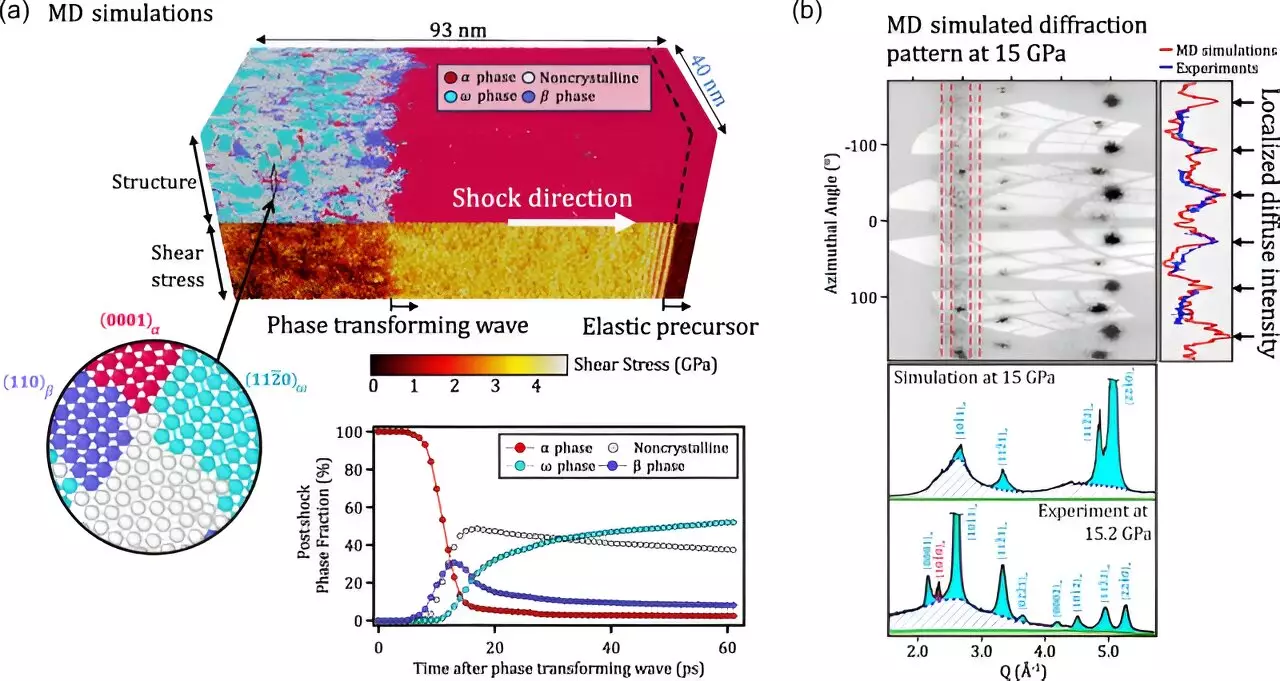Modern technological advancements heavily rely on the properties of materials, especially in industries that function under extreme conditions such as aerospace, nuclear energy, and military applications. In these environments, materials are subjected to severe stressors, including high temperatures, intense pressure, and corrosive substances. Therefore, understanding how materials behave at the atomic level under such stress is crucial for innovations in developing next-generation materials that must not only be resilient and lightweight but also cost-effective and sustainable.
Recent studies conducted by scientists at Lawrence Livermore National Laboratory (LLNL) have shed light on the behavioral quirks of zirconium—the metal widely utilized in the nuclear sector. By compressing single crystal samples of zirconium, researchers found that the material responded in ways that were not only unexpected but also highly complex under elevated pressures. The findings, published in the prestigious journals Physical Review Letters and Physical Review B, reveal insights that could revolutionize how we understand material deformation in high-stress scenarios.
Under substantial stress, materials exhibit a range of mechanisms to relieve shear stresses, including dislocation slip, phase transitions, and even amorphization. Zirconium, already known for its robustness, exhibited additional complexities due to shifts in its crystallographic structure when subjected to pressure. Saransh Soderlind, a prominent scientist at LLNL and lead author of the study, emphasized that comprehending these mechanisms is pivotal for building accurate predictive models of material performance.
Unlike typical metals that deform primarily through dislocation movement along crystallographic planes, zirconium presented an array of deformation pathways due to its reactive crystalline attributes. By utilizing innovative experimental techniques, the LLNL team was able to observe these unique behaviors, revealing a multi-faceted deformation process that had never previously been documented.
One standout aspect of this research involved the use of femtosecond in-situ X-ray diffraction. This cutting-edge method allowed scientists to monitor the real-time behavior of zirconium under high-pressure conditions over extremely rapid timeframes. Astonishingly, the research discovered atomic disorder and multiple pathways for crystal structural transformations—an unparalleled observation within elemental metals. Notably, this atomic disorder was absent in the experiments conducted on polycrystalline zirconium, highlighting the uniqueness of single crystal research.
To corroborate their experimental findings, the scientists employed molecular dynamics simulations, analyzing millions of atoms through machine-learned potential models. This multi-faceted approach not only validated their experimental data but also painted a more detailed picture of atomic movements under considerable pressure, suggesting that similar complexities may exist across a variety of materials faced with extreme conditions.
The ramifications of this study extend beyond the realm of zirconium, considering its vital role in the nuclear industry as fuel rod cladding due to its high strength and low neutron absorption characteristics. Additionally, the insights gained from this research could be transformative for material science, aiding in the design of materials that can better withstand extreme conditions in various applications. Understanding the intricate details of deformation behavior at the atomic level will pave the way for significant advancements in engineering smarter, more durable materials for the challenges of tomorrow’s technological landscape.

